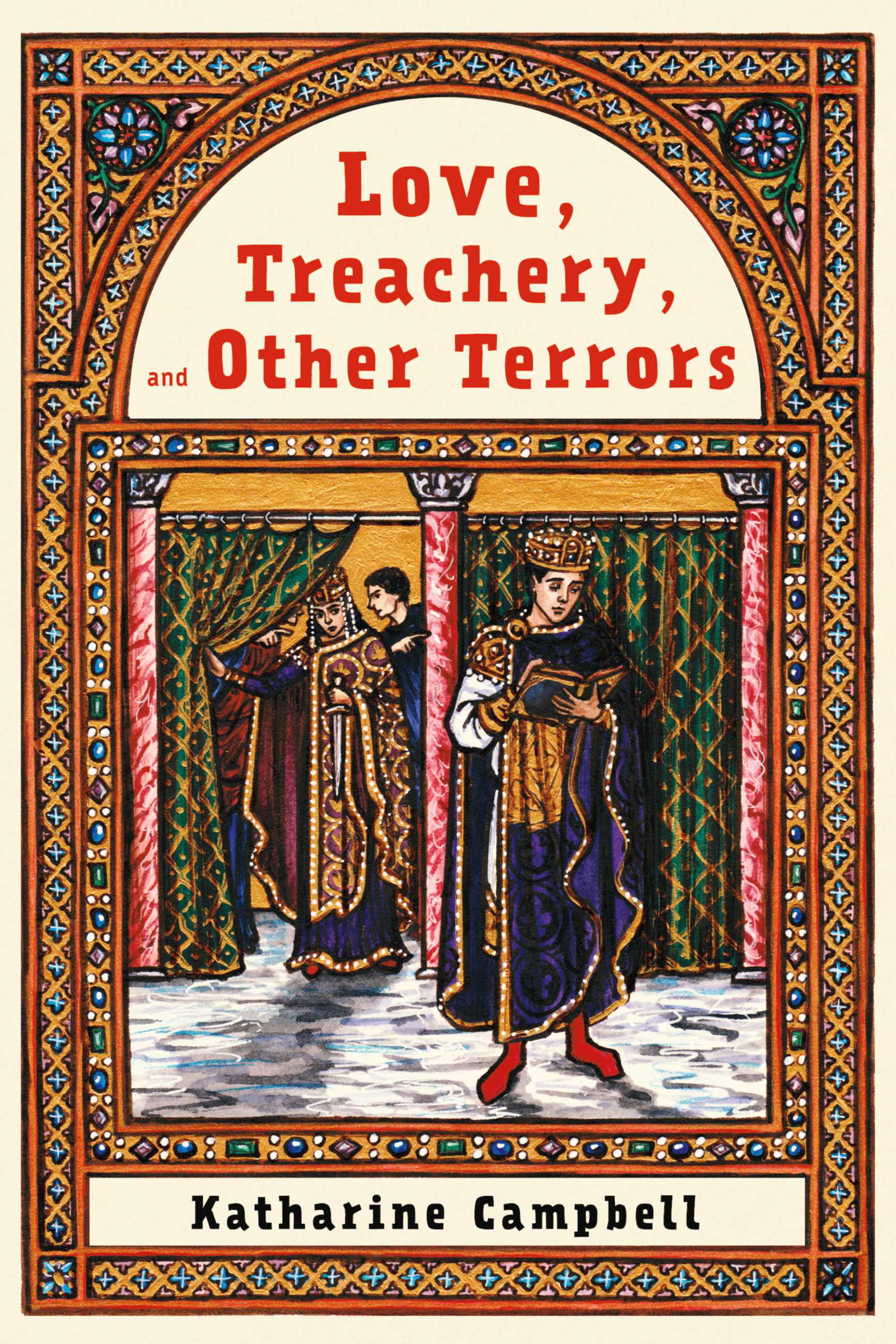Interview with Alumna Katy Campbell, Author of Love, Treachery, and Other Terrors
March 4, 2021
Last month, alumna Katy (Sohler) Campbell published a new novel, Love, Treachery, and Other Terrors. The quirky fairytale story combines elements of fantasy, religion, and fable, set against the backdrop of a fictional kingdom loosely inspired by the 12th century Byzantine Empire.

Since graduating from JPCatholic in 2012 with an emphasis in Film Production, Campbell has been working as manager of a multimedia team at a Silicon Valley tech company, while continuing creative writing on the side. She and her husband, fellow alum Joe Campbell, live in Washington with their three children.
In the interview below, Katy shares the inspiration behind her novel, how JPCatholic professors influenced the book, and what’s next for the world she’s created.
Synopsis:
Alexander is running for his life. Did he want the crown? No. He just wanted to hide in a monastery, paint icons, and be left alone. Unfortunately, a good prince has to do what his father says, even if it makes his homicidal sister jealous. This quirky, medieval fantasy is a story of betrayal, love, magic, and providence. There are also a couple of scorpions.
How did this novel come about, and how long have you been working on it?
Several years ago, I started writing short stories that were heavily inspired by fables and classic fairytales. I set these stories within a sort of alternate universe called Para Sympan (meaning “second world”), and simply shared them on my blog.
Alexander’s story started as a series of short stories that incorporated several fairytale tropes. For example, in classic fairytales, it’s common to have one or more wicked elder siblings while the youngest is virtuous. And of course, good deeds are rewarded in fairytales (often by fairies).
While I was writing these shorts, I kept finding myself cutting out content because the story was getting too long for my blog. That’s when I realized I had to write a novel so I could really delve deep into the characters.
What do you hope readers take away from your new novel?
Some themes that were important to me as I developed this story:
- God’s grace is greater than our own human faults. In the beginning of the story, Alexander struggles with self-doubt, scrupulosity, and depression. With God’s grace, he is able to triumph over evil in the end.
- Marriage isn’t the end of the story. One fairy tale trope I didn’t include was ending the story when the prince and the princess get married. Instead they get married about halfway through, and their marriage plays a critical role in defeating the villains in the end. I’ve been married for six years now and strongly feel that marriage is in and of itself an adventure. Why would you end the story just when things are getting interesting?
Who do you see as the audience for the book?
The target audience for this book is around early teens. But the truth is I write for myself - if it makes me laugh I’ll put it in the book. Or if it makes anyone laugh, I don’t care how old they are or what quadrant they fit into.
I wanted to write it so that adults could still appreciate the story and the writing, but also if a young teen picks it up, they’re not going to encounter any graphic content or anything inappropriate for them.
How did you become interested in fiction writing? What was your experience with writing before the fables of Para Sympan?
I’ve been writing fiction for as long as I can remember. Before I could read, I drew stories on printer paper. When I learned to read, I read everything I could get my hands on. I actually started my first novel when I was about nine and worked on it for ten years, publishing it at 19. (The book is a chapter book called Martha and Chip. I consider it my practice novel.)
What would you say are some of your main sources of inspiration as an author?
I love C.S. Lewis. Narnia was, and probably always will be, my favorite fantasy series. I also have always loved folktales and mythology. Love, Treachery, and Other Terrors drew a lot of inspiration from the Arabian Nights, Hans Christian Anderson, and Grimms’.
I pull a lot from the Bible as well. It’s a gold mine of human drama. For example, toward the end of the book, there’s a scene where Alexander is mocking the villains (Jace and Acacia). I got the idea for this from the story in Kings where Elijah trolls the prophets of Baal. And of course, the trope of a hero going into exile and then being compelled to return later to save his people comes from Exodus.
Which professors at JPCatholic influenced your storytelling style the most, or perhaps even specific aspects of your novel?
The answer is all of them. I feel like what I learned at JPCatholic heavily influenced the book. The best piece of writing advice I ever got was from Prof. Riley. He said that if you are bored writing the story, your readers will be bored reading it. If I found myself bored at any point during the writing process, I would change the scene.
The professor who inspired the story the most was Fr. Andy. He has this magical way of making philosophy accessible to ordinary people. He simplifies it without watering it down. I wrote a short story Rouvin the Philosopher which was directly inspired by conversations I had in his philosophy class. I reference this story in Love, Treachery, and Other Terrors and spend a lot of time poking fun at philosophers in general.
What was the process like for you to get it published on Amazon?

I actually went through a company called BookBaby. BookBaby is a self-publishing company that helped me with the cover design, layout, and distribution. I followed their instructions for preparing and uploading my manuscript, then they came back to me with cover and interior designs. I approved the designs and they had the book added to Amazon, Barnes and Nobles, and all the other major retailers. I commissioned the cover art from an artist named Cecilia Lawrence, who is a Byzantine Empire enthusiast.
Kalathea is loosely inspired by the Byzantine empire (in the same way most fairytale kingdoms are inspired by North/Western European kingdoms). I spoke to other artists, but they didn’t seem to understand what I meant when I said I was going for a Byzantine look. Cecilia nailed it. I actually told her she was being too historically accurate at one point (haha)! I didn’t want to trick people into thinking this was historical fiction. They would be extremely disappointed with my complete lack of regard for historical accuracy. (Fairies using sock drawers instead of keeping their socks in chests as fairies actually would have done during that time period.)
You can read Cecilia’s writeup on the cover art here.
What are your future plans for the world of Para Sympan? How can readers follow your work?
My next book is going to be a compilation of all the short stories from my website.
I am also planning a couple of spin-off books that star other characters from Love, Treachery, and Other Terrors. I don’t have a direct sequel planned at this time because Alexander has been through enough in his life and needs a break.
Readers can follow my blog or sign-up for my email list by using the contact form on my website www.katysfables.com.
If you are interested in reading Love, Treachery, and Other Terrors, you can order a digital or physical copy on BookBaby or Amazon.